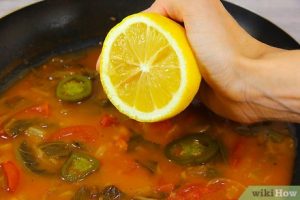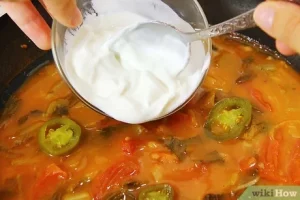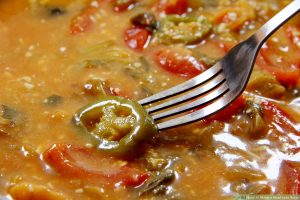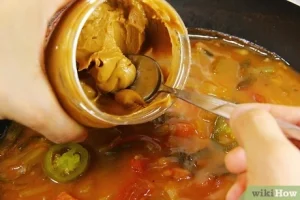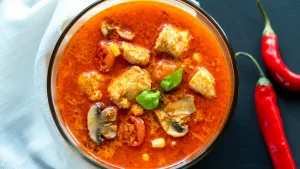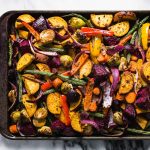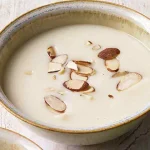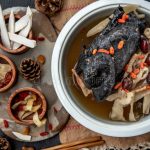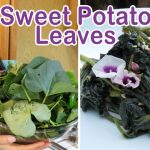You’ve already set the table, listened to your favorite music, and cracked open a bottle of wine. Your friends are on their way over right now. When you taste your food one more time to make sure it’s ready to serve, your mouth starts to burn. How To Make Foods Less Spicy?
The dish you worked so hard to prepare is far too hot. You believe, “I’ve gone too far, oh no! That final dash of cayenne was a mistake! I’ve made my food uneatable! In a panic, you take out a frozen pizza and consider throwing the entire thing in the trash. Don’t worry, there are a few things you can do to answer the question How To Make Foods Less Spicy?
How To Make Foods Less Spicy? 5 Effective Ways Below
1. Equalise it with acid
How To Make Foods Less Spicy? Whether they are fresh or dried, hot peppers like chili and cayenne contain a substance called capsaicin. Most of the heat you feel comes from this component, notably the burning feeling it causes when it comes in touch with mucosal membranes (like those inside your mouth). Since capsaicin is an alkaline oil, cooking acids may be used to reduce its heat.
Vinegar, wine, tomatoes, lemon or lime juice, and even pineapple juice can all assist to balance the pH of spicy oil and take some of the fiery heat out of it.
To a food that has too much spice, add a tablespoon or two of wine, vinegar, or tomato sauce, or the juice of half a lemon or lime. Alternately, finely dice some fresh pineapple or tomato and add no more than 1/4 cup at a time.
After completely incorporating everything, let the flavors mingle for 15 to 30 minutes. Once tasted, make any additional adjustments as needed.
2. Use oil or milk to cool it
Another way to lessen the potent heat of capsaicin is to consume some vegetable oil or other dairy products. Dairy is essentially a different acidic choice with a few more qualities not provided by the substances stated above.
Being an oil-soluble substance, capsaicin can be dissolved and diluted by adding a healthy oil, such as grapeseed, olive, or coconut.
Make sure to select an oil that has a neutral flavor or one whose flavor will go well with your food. To maintain the dish‘s texture and consistency, add the remaining ingredients one teaspoon at a time, very slowly.
If the flavor of your recipe can support the inclusion of nuts, nut butter like peanut, almond, cashew, and sesame (also known as tahini) can be used in place of vegetable oil to help diffuse some of the heat.
Spicy summer rolls, stir-fries, and Pad Thai are all excellent possibilities for cooling off with nut butter. Use it to make a cold dipping sauce or add little amounts when cooking.
Due to the presence of casein, a protein that loves fat and is only found in dairy products, dairy products also aid in reducing the burning sensation caused by capsaicin. The heat-producing oil particles are encircled by it, with which it bonds; it then disperses them.
The best items are those that are full of fat. Add them once more gradually till you feel some relief. To lessen the heat, try butter, ghee, cow’s milk, plain yogurt, cheese (especially soft fresh cheese), and sour cream.
Be aware that this will also thicken your sauce. Try topping it with some grated cheese if this isn’t what you’re hoping for. As a condiment or dip, you can also provide yogurt or sour cream so that your dinner guests can customize the flavors to their liking.
Even if you overdid it on the hot pepper, serving shredded cheese and sour cream beside a big pot of spicy chili is always a wonderful idea for feeding a crowd.
3. Implement it twice and thin it out
If you have enough time and a big enough pot, you can put out the flames by adding more of the dish’s main ingredients—but not the spices! This can entail adding more sauce, stock, vegetables, or meat, depending on what you’re preparing.
If you don’t have more of the primary ingredients on hand, adding a simple mirepoix will typically work. Grated potatoes and winter squash, as well as carrots, celery, and onions, are all good additions for extending and balancing flavors.
One last piece of advice for How To Make Foods Less Spicy: add more water or another suitable liquid if your sauce has become too thin even though it is no longer very hot. Once the sauce has attained the proper consistency, boil and reduce it once more.
However, use caution since if you go too far, the process of lowering liquids might concentrate flavors once more and undo all of your mending work.
4. Add other ingredients
Increasing the amount of non-spicy ingredients in a dish is another quick and easy technique to reduce the heat without drastically altering the flavor. This is my preferred method for reducing the heat in food.
Therefore, you can easily add more of the less-spicy ingredients, like ground beef, beans, and even water, if your chili soup is too hot and spicy. Avoid filling your dish with too many dull ingredients. Watch the flavor balance as you attempt to tone down the spice because doing so can ruin the flavor.
Keep in mind that you are seeking How To Make Foods Less Spicy, not the flavor, of the food. There is a distinction there, and you must pay attention to how the various flavors in your cuisine interact and counterbalance one another.
5. Choose the Correct Sides
The last way How To Make Foods Less Spicy is you had better choose the right sides. Sometimes the simplest solutions are the most effective ones, and pairing spicy cuisine with the appropriate side dishes ensures that neither the flavor of the dish nor its carefully picked ingredients are compromised. Therefore, by selecting a bland or starchy item as a side, you can moderate the heat of a hot dish if it is too spicy. This balances the heat, and you can enjoy eating the two together since the side dish deftly manages the overbearing heat.
This explains why chips are offered with salsa and why spicy burritos come with a plain tortilla. You can handle the spiciness of some of the ingredients in your food using these built-in strategies.
Bread, potatoes, root vegetables, and pasta are some foods that, when served as a side dish, are excellent for taming heat. Simply choose one of these sides to accompany your main course if you discover that it is too spicy. This will assist you to manage the level of heat in your main meal.
What should you avoid?
If you’re trying to figure out how to make Thai food less spicy or reduce the heat in your breakfast sausage, there is something you should not do. There are particular meals that bring out a dish’s spice. A hot beverage is one of them. Along with your dinner, sip on some hot cocoa, tea, or coffee to amp up the heat. I don’t know whether you’ve ever seen this, but it’s something to be on the lookout for.
Drink something cold or room temperature with your dinner if you are eating something spicy and you are concerned that it may be too spicy. Don’t drink anything hot with a meal that is already too spicy for you because it will increase the spice and bring it out much more.
After reading this article, I am sure that you all know How To Make Foods Less Spicy. Thank you for reading and see you next time!
